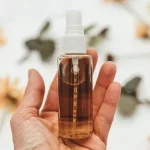Have you ever woken up with eyes so dry they feel like they’ve been rubbed with sandpaper? Or perhaps you’ve spent a long day watching a screen, best to locate your eyes itchy, red, and begging for remedy? My friend Leilani is aware of this struggle all too well. For years, she tried the entirety—eye drops, ointments, even tweaking her diet—however not anything regarded to paste. Then, at some point, she stumbled throughout eye masks for dry eyes, and it became a total sport-changer for her. But right here’s the massive question: do eye masks absolutely work for dry eyes, or was Leilani simply one of the lucky ones? Let’s dive in and determine this out collectively!
In this article, we’re going to explore everything you need to recognise approximately eye mask for dry eyes—what they’re, how they paintings, whether or not they’re secure, and the way they stack up against different remedies. By the stop, you’ll have a solid idea of whether they is probably the answer in your dry eye woes. But first, let’s get clean on what dry eyes are all approximately.
Understanding Dry Eyes: Symptoms and Causes
Dry eyes aren’t only a minor annoyance—they could critically mess with your day. Whether it’s that gritty feeling or blurry imaginative and prescient that received’t stop, it’s no picnic. So, what’s going on while your eyes decide to stop cooperating?
Symptoms of Dry Eyes
The folks at the Mayo Clinic break it down nicely. If you’ve got dry eyes, you might notice:
- Redness that makes you look like you’ve been crying (even if you haven’t)
- A burning or stinging sensation—like your eyes are protesting
- That annoying “something’s in there” feeling
- Blurred vision that makes reading or driving a chore
- Sensitivity to light (hello, squinting indoors!)
- Weirdly enough, watery eyes—yep, dry eyes can overcompensate
- Struggles with contact lenses
- Eyes that feel tired way too soon
- Stringy mucus hanging out around your eyes
These symptoms can hit you all at once or just pop up here and there. Either way, they’re a signal your eyes need some TLC.
Causes of Dry Eyes
So why does this happen? According to the National Eye Institute, dry eyes kick in when your tear production goes haywire—either you’re not making enough tears, or the tears you’ve got aren’t doing their job. Here’s what might be behind it:
- Aging: Sorry, but getting older means tear glands slow down.
- Hormones: Menopause or pregnancy can throw things off.
- Meds: Antihistamines, antidepressants, even blood pressure pills can dry you out.
- Environment: Dry air, wind, or hours on your phone can zap moisture.
- Health stuff: Conditions like Sjogren’s syndrome or blepharitis can mess with tear glands.
- Contact lenses: Wearing them too long can irritate your eyes.
- Eye surgery: LASIK might leave you dry for a bit.
- Diet: Not enough vitamin A? That’s a problem.
- Autoimmune issues: Lupus or rheumatoid arthritis can target your tear system.
Figuring out what’s causing your dry eyes is like detective work—it helps you pick the right fix. For Leilani, it turned out her meibomian glands (those tiny oil producers in your eyelids) weren’t working right, which brings us to our star player: eye masks for dry eyes.
What Are Eye Masks for Dry Eyes?
Eye masks for dry eyes are like little spa treatments you may do at domestic. They’re designed to appease your eyes with heat, moisture, or each, and that they’re high-quality clean to apply—just pop one on and loosen up. Medical News Today calls them a handy option for dry eye relief, and I can see why!
Types of Eye Masks
Not all eye masks are created equal. Here’s the rundown on the different types so you can find one that fits your vibe.
Heated Eye Masks
These are the heavy hitters. You warm them up in the microwave, and they deliver cozy heat to your eyes. Brands like Bruder Have been round for over 35 years, and that they’re loved for assisting unclog those meibomian glands. Think of it like a warm hug to your tired eyes after a long day.
Self-Heating Eye Masks
No microwave? No problem. Self-heating masks kick into gear with air or a chemical reaction—perfect for travel or when you’re on the go. You can snag these on Amazon and toss one in your bag for instant relief.
Sleep Masks
These are made for nighttime warriors. They trap moisture around your eyes while you snooze, so you wake up without that desert-eye feeling. Vision Care Grayslake says they’re a solid pick if mornings are your dry-eye nemesis.
Moisturizing Eye Masks
Think of these as a hydration enhance. Often gel-based totally or in patch form, they’re like a mini spa sesh in your eyes. You can discover them at places like Sephora, and that they’re outstanding for a fast refresh after a long day.
Which one’s right for you? If you’re always on the move, go for self-heating. Love winding down at night? Try a heated or sleep mask. Want a pampering vibe? Moisturizing masks are calling your name.
How Do Eye Masks Work for Dry Eyes?
Okay, so we’ve got the “what”—now let’s talk about the “how.” How do these masks actually tackle dry eyes? Spoiler: it’s all about teamwork between heat, moisture, and your tear glands.
The Science Behind Eye Masks
Your tears aren’t just water—they’re a fancy 3-layer blend. There’s a mucous layer sticking on your eye, a watery layer for moisture, and an oily layer on top to lock it all in. That oily layer comes out of your meibomian glands, and when they get clogged (good day, meibomian gland dysfunction, or MGD), the oil thickens up, your tears evaporate faster, and bam—dry eyes.
Eye masks, especially the heated ones, step in like a superhero. The warmth melts that thickened oil, getting it flowing again so it can coat your tears properly. It’s like unclogging a drain—once the oil’s moving, your tear film stays stable, and your eyes stay happier. River Heights Eye Care explains this really well if you want a deeper dive.
Scientific Evidence and Studies
But don’t just take my word for it—science has some thoughts too! A 2014 study put heated eye masks to the test with 100 people who had MGD. Half used the MGDRx EyeBag (a heated mask), and half stuck with warm towels. After four weeks, 80% of the mask crew felt better, compared to just 50% with towels. The masks also boosted gland function way more—pretty impressive, right?
Then there’s a 2021 study that compared two heated masks—TheraPearl Eye Mask and Blephasteam—in 60 folks with MGD-related dry eyes. Both groups saw big improvements in tear film stability and fewer symptoms. No major difference between the two masks, which tells us heated eye masks, in general, can get the job done.
So, yeah, the research says eye masks for dry eyes can absolutely work, especially if MGD is your issue. That said, studies are still digging into how they help other dry eye causes, so it’s not a universal fix—yet.
Are Eye Masks Safe to Use?
Short answer: yep, they’re usually safe! But (and there’s always a but), you’ve got to use them smartly. Bella Vision points out that a little caution goes a long way.
Precautions for Using Eye Masks
Here’s how to keep things safe and comfy:
- Stick to the Rules: Read the instructions—seriously, don’t skip this step.
- Check the Heat: Test it on your wrist first. It should feel warm, not scorching—aim for 89.6°F to 113°F, per Medical News Today.
- Stay Clean: If it’s reusable, wash it regularly. No one wants a germy mask.
- Ask Your Doc: Got allergies or another eye condition? Chat with your eye doctor first.
Potential Risks and How to Avoid Them
Risks are rare, but they’re worth knowing:
- Burns: Too hot? You could hurt your skin. Test that temp every time.
- Allergies: Some fabrics or gels might bug your skin—stop if it itches.
- Infections: Dirty masks can harbor bacteria. Keep it clean, folks!
Follow these tips, and you’ll be golden. Leilani swears by her mask, but she’s religious about checking the heat first—no burns for her!
How to Use Eye Masks Effectively
Want to make your eye mask work its magic? It’s all about doing it right. Here’s a little how-to guide:
- Read Up: Every mask has its quirks—check the manual.
- Heat It Right: Microwave for 20-30 seconds (or whatever it says). No shortcuts!
- Test It: Wrist check—warm, not hot.
- Relax: Pop it on for 10-15 minutes over closed eyes. Bliss time!
- Clean It: If reutilizable, wash it after. Hygiene matters.
- Team It Up: Pair it with eye drops or other tricks your doc suggests.
Consistency is your friend here. Leilani uses hers every night, and she says it’s like a reset button for her eyes. Give it a regular spin, and you might notice a difference too.
Other Treatment Options for Dry Eyes
Eye masks are awesome, but they’re not the only game in town. Depending on what’s causing your dry eyes, you might want to mix and match treatments. Here’s what else is out there:
Artificial Tears
These drops are like a quick hydration hit—perfect for instant relief. You can grab them over the counter, and there are options with or without preservatives (unpreserved is gentler if you’re using them a lot).
Prescription Medications
For tougher cases, your doc might suggest cyclosporine (Restasis) or lifitegrast (Xiidra). They tackle inflammation or boost tear production. WebMD has the scoop if you’re curious.
Punctal Plugs
These little plugs go in your tear ducts to keep tears from draining away too fast. Think of them as tiny dams for your eyes. The American Academy of Ophthalmology explains how they work.
In-Office Treatments
Stuff like meibomian gland expression (fancy unclogging) or intense pulsed light therapy can target the root cause. Vector Eye Centre dives into these options.
Lifestyle Changes
Don’t sleep on the simple stuff—it can really help:
- Run a humidifier to keep the air moist.
- Drink water like it’s your job.
- Take screen breaks—your eyes need a breather.
- Steer clear of smoke and wind when you can.
The NHS has more everyday tips to try.
The trick? Combine what works for you. Leilani uses her mask plus drops, and it’s been a winning combo.
Conclusion
So, do eye masks really work for dry eyes? For lots of folks—like Leilani—the answer’s a big yes. Studies back them up, especially for MGD, showing they can ease symptoms and keep your tear film in check. They’re safe if you play by the rules, and they’re a solid addition to your dry-eye toolkit. But they’re not a magic bullet—pairing them with other treatments might be your best bet.
If dry eyes are cramping your style, why not give an eye mask a shot? Talk to your eye doctor to see if it fits your situation. Who knows—you might wake up feeling as refreshed as Leilani does now. Got questions or a story of your own? Drop a comment below—I’d love to hear from you!


















Leave a Reply
You must be logged in to post a comment.